


Sand mining is a serious issue of environmental concern in the Kerala province of India. Even though sand mining is banned in most parts of Kerala, it is going on secretly because of the big demand of sand in the booming construction of the state.



Sand mining is a serious issue of environmental concern in the Kerala province of India. Even though sand mining is banned in most parts of Kerala, it is going on secretly because of the big demand of sand in the booming construction of the state.
Sand mining is a serious threat to most of the rivers in Kerala but the case is more visible in Periyar river. The indiscriminate mining has even affected the stability of Sree Sankara Bridge at Kalady.
According to D. Padmalal, head of the Environmental Science division, National Center for Earth Science Studioes, this kind of mindless mining has created big problems to the rivers of the state. Four people died from drowning in the Periyar at Kalady on Friday due to illegal sand mining. [1]
The high court of Kerala has banned mining within one km radius of bridges but the state government is permitting mining even within 500 meters of the bridge. Illegal sand mining has created about 800 pits on the Periyar river. In June 2015, the government of Kerala banned mining in six rivers of Kerala for a period of three years. [2]
Jazeera, a female environmentalist, from Madayi village in Kannur District, Kerala has recently staged a sit in strike against sand mining before the Kerala House in New Delhi. [3] She was accompanied by her three children. Her fight was not successful except for making the central government send a letter on the issue to the provincial government of Kerala. Jazeera got wide coverage for the issue on various Indian and foreign media including the BBC. [4] According to one study by the Government Brennen College, Thalassery, Jaseera was isolated in the Kerala society because of its strong patriarchal nature. [5]

Ernakulam is one of the 14 districts in the Indian state of Kerala, and takes its name from the eponymous city division in Kochi. It is situated in the central part of the state, spans an area of about 2,924 square kilometres (1,129 sq mi), and is home to over 9% of Kerala's population. Its headquarters are located at Kakkanad. The district includes Kochi, also known as the commercial capital of Kerala, which is famous for its ancient churches, Hindu temples, synagogues and mosques.
Sand mining is the extraction of sand, mainly through an open pit but sometimes mined from beaches and inland dunes or dredged from ocean and river beds. Sand is often used in manufacturing, for example as an abrasive or in concrete. It is also used on icy and snowy roads usually mixed with salt, to lower the melting point temperature, on the road surface. Sand can replace eroded coastline. Some uses require higher purity than others; for example sand used in concrete must be free of seashell fragments.
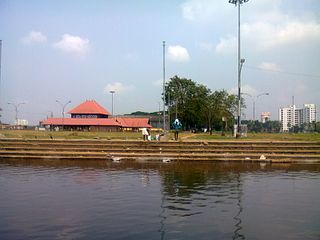
Aluva is an eastern suburb of the city of Kochi in Kerala, India. It is a part of the Kochi metropolitan area and is situated around 15 km (9.3 mi) from the city centre on the banks of Periyar River. A major transportation hub, with easy access to all major forms of transportation, Aluva acts as a corridor which links the highland districts to the rest of Kerala. Cochin International Airport at Nedumbassery is 11.7 km from Aluva. Aluva is accessible through rail, air, metro along with major highways and roadlines. Aluva KSRTC bus station is an important transport hub in Kerala and one of the busiest stations in central part of the state.

Periyar, IPA:[peɾijɐːr], is the longest river and the river with the largest discharge potential in the Indian state of Kerala. It is one of the few perennial rivers in the region and provides drinking water for several major towns. The Periyar is of utmost significance to the economy of Kerala. It generates a significant proportion of Kerala's electrical power via the Idukki Dam and flows along a region of industrial and commercial activity. The river also provides water for irrigation and domestic use throughout its course besides supporting a rich fishery. Due to these reasons, the river has been named the "Lifeline of Kerala". Kochi city, in the vicinity of the river mouth, draws its water supply from Aluva, an upstream site sufficiently free of seawater intrusion. Twenty five percent of Kerala's industries are along the banks of the Periyar. These are mostly crowded within a stretch of 5 kilometres (3 mi) in the Eloor-Edayar region (Udhyogamandal), about 10 kilometres (6 mi) north of Kochi harbor.

The MeenachilRiver or Meenachilaar, also known as Kavanar, Valanjar, is a river in Kerala. It is one of the most treacherous rivers in Kerala due to its flash floods, heavy undercurrents and woods and debris it carries from the mountains. It flows through the heart of Kottayam district, Kerala state in southern India. 78km long, originates in the Western Ghats main tributaries are Theekoy aaru from Vagamon hills, Poonjar Aaru and Chittar, flowing westward through the city of Kottayam and other towns like Poonjar, Teekoy, Erattupetta, Bharananganam, Pala, Mutholy, Cherpunkal, Kidangoor and Kumarakom before emptying into the Vembanad Lake on the shore of the Indian Ocean.
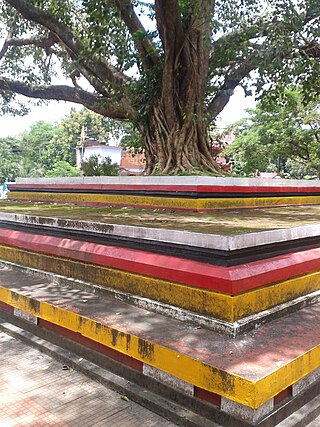
Pazhayangadi, is a small township, approximately 23 km (14 mi) north of district headquarters Kannur, 15 km (9.3 mi) south of Payyanur and 14.5 km (9.0 mi) west of Taliparamba in the Indian state of Kerala. In the local language of Malayalam it literally means "Old Market". The town is bounded by the Madayi Hills (Madayippara) on the west and by the Pazhayangadi River on the south. Ezhimala, a range of hills, that is believed to be home to a variety of medical herbs including mrithasanjeevini, and a very ancient recorded history, is situated nearly 8 km west of Pazhayangadi. Pazhayangadi town is spread over Madayi and Ezhome Grama Panchayats. Madayi Hill offers a splendid scene of Ezhimala which means a chain of seven mountains, where the Indian Naval Academy is situated.
The mining industry in India is a major economic activity which contributes significantly to the economy of India. The gross domestic product (GDP) contribution of the mining industry varies from 2.2% to 2.5% only but going by the GDP of the total industrial sector, it contributes around 10% to 11%. Even mining done on small scale contributes 6% to the entire cost of mineral production. Indian mining industry provides job opportunities to around 700,000 individuals.
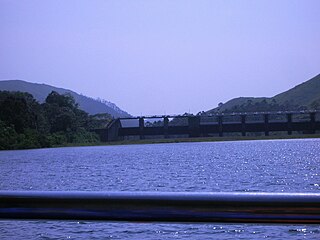
Mullaperiyar Dam is a masonry gravity dam on the Periyar River of Idukki district of Indian state of Kerala. It is situated 150km south east of Kochi. It is located 881 m (2,890 ft) above the sea level, on the Cardamom Hills of the Western Ghats in Thekkady, Idukki District of Kerala, India. It was constructed between 1887 and 1895 by John Pennycuick and also reached in an agreement to divert water eastwards to the Madras Presidency area. It has a height of 53.6 m (176 ft) from the foundation, and a length of 365.7 m (1,200 ft). The Periyar National Park in Thekkady is located around the dam's reservoir. The dam is built at the confluence of Mullayar and Periyar rivers. The dam is located in Kerala on the river Periyar, but is operated and maintained by the neighbouring state of Tamil Nadu. Although the Periyar River has a total catchment area of 5398 km2 with 114 km2 downstream from the dam in Tamil Nadu, the catchment area of the Mullaperiyar Dam itself lies entirely in Kerala and thus not an inter-State river. On 21 November 2014, the water level hit 142 feet for first time in 35 years. The reservoir again hit the maximum limit of 142 feet on 15 August 2018, following incessant rains in the state of Kerala. In a 2021 UNU-INWEH report about ageing large dams around the world, Mullaperiyar was said to be "situated in a seismically active area with significant structural flaws and poses risk to 3.5 million people if the 100+ years old dam were to fail".

Sand theft or unauthorised or illegal sand mining leads to a generally unknown global example of natural and non-renewable resource depletion problem comparable in extent to global water scarcity. Beach theft is illegal removal of large quantities of sand from a beach leading to full or partial disappearance of the beach. In India illegal sand mining is the country's largest organized criminal activity.
Mining scams in India refers to a series of alleged widespread scams in various ore-rich states of India, which has generated controversy. Such issues span encroachment of forest areas, underpayment of government royalties, and conflict with tribals regarding land rights. The spill-over of the effects of legal mining into issues such as Naxalism and the distortion of the Indian political system by mixed politics and mining interests, has gained international attention.

Awaaz Foundation is a charitable trust and non-governmental organisation in Mumbai, India which builds awareness, carries out advocacy, and is involved in educational projects to protect the environment and prevent environmental pollution. It has impacted many important decisions by the government and influenced policy making in important environmental matters in India. The beneficiaries of the Foundation are the citizens of India at large.

The Bharathappuzha, also known as the Nila or Ponnani River, is a river in the Indian states of Tamil Nadu and Kerala. With a length of 209 km, it is the second longest river that flows through Kerala after the Periyar. It flows through Palakkad Gap, which is also the largest opening in the Kerala portion of Western Ghats. The Nila has groomed the culture and life of South Malabar part of Kerala. It is also referred to as the "Peraar" in ancient scripts and documents. River Bharathapuzha is an interstate river and lifeline water source for a population residing in four administrative districts, namely Malappuram and Palakkad districts, and parts of Palakkad-Thrissur district border of Kerala and Coimbatore, and Tiruppur of Tamil Nadu. The fertile Thrissur-Ponnani Kole Wetlands lie on its bank.
C. R. Neelakandan is an Indian environmental activist, politician and writer. A a regular contributor to Malayalam periodicals on environmental issues, Neelakandan is a former State Convener of Aam Aadmi Party Kerala.

Tamil Nadu-Kerala dam row is an ongoing row and the long legal battle between the Indian states of Tamil Nadu and Kerala about the Mullaperiyar Dam on the Periyar river. Although the 127-year-old Mullaperiyar dam is located in Kerala, it is operated by the government of Tamil Nadu which signed a 999-year lease agreement with the former British government to irrigate farmland on its side. The agreement was signed by the Secretary of Madras State under the British Raj and the King of Travancore. From several technical surveys conducted, Kerala states the old masonry dam built with lime surkhi mortar is structurally getting weaker and costly in leakage and massive cracks - shear maintenance in abutments above all poses a significant danger to an approximate 3 million people living in the region and that it needs to be rebuilt – a move opposed by Tamil Nadu. Tamil Nadu maintains that the endangered dam was repaired in 1979 and insists the dam's walls have been strengthened and that it can hold more water than the current level of 136 ft and also due to the fact it only takes around 25,000 INR per year payment for an estimated usage of water for 8000 acres per British oppression era lease, this does not include how many tmc feet could be shared which is also a blissful loophole in the Mullayar-"Periyar Lease Deed of 1886" that the government is unwilling to waive. In a 1998 affidavit, the Tamil Nadu government admitted that it drew around 21 tmc ft or 594636000000 L annually for around 230,000 acres. Although the Periyar River has a total catchment area of 5398 km2 with 114 km2 downstream from the dam in Tamil Nadu, the catchment area of Mullaperiyar Dam itself lies entirely in Kerala and thus its water source is not an inter-State river.
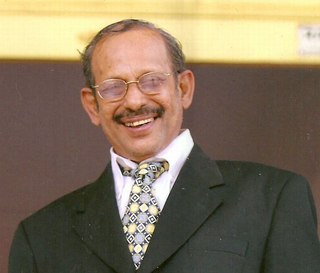
Sitaraman Sankaranarayana Iyer, also known as Professor S. Sitaraman was an environmentalist and teacher from Aluva, Kerala, India. He has been active in the protection of rivers, water bodies and forests of Kerala. He is best known for his campaign on the protection of river Periyar and is the founder of e.g. the All-Kerala River Protection Council.He died on 9 December 2020 aged 74.

Pizhala is an island village, one among the fourteen islands of Kadamakkudy archipelago, located near to the main land of the city Ernakulam. The island is surrounded by tributaries of river Periyar. Pizhala island is part of Kadamakkudy village of Kanayannur taluk in Ernakulam district in the state of Kerala, India.

Sand mining, especially illegal sand mining in Tamil Nadu state is done on river beds, basins and beaches, It has been on an increase, since the beginning of the 1990s following a boom in the construction industry. Palar River basin, Vaigai River basin, Cauvery River basin and Thamirabarani River basin are some of the most affected regions. Illegal quarrying is happening in these areas in broad daylight. Though as per Tamil Nadu Public Works Department, 5,500-6,000 truck loads of 200 cubic ft. of sand is mined each day, in reality this figure is estimated to be around 55,000 truckloads of 400 cubic ft. of sand per day. In 2013, illegal sand mining in the state was estimated to be worth ₹15,000 crore (US$1.8 billion). This also results in the state exchequer losing over ₹19,800 crore (US$2.4 billion) in revenue.
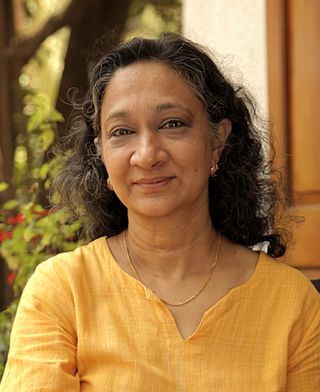
Sumaira Abdulali, born 22 May 1961 is an environmentalist from Mumbai, India, founder of the NGO Awaaz Foundation and convenor of the Movement against Intimidation, Threat and Revenge against Activists (MITRA). She was co-chairman of the Conservation Subcommittee and honorary secretary of Asia's oldest and largest environmental NGO, the Bombay Natural History Society, and was a Governing Council Member between 2008 and 2021.

Sand smuggling is the cross-border environmental crime of illegal transportation of often illegally extracted natural sand and gravel. While sand smuggling and illegal mining are global concerns, they are especially acute in Asia, where continuing urbanization and the region’s large construction boom are driving the increasing demand for sand. The consequences of excessive sand mining and smuggling, which are strongly connected, range from environmental degradation to geopolitical tension.
Aboon Samuel Mor Irenios Kattukallil is an Indian Syro-Malankara Catholic clergyman, educator, and prelate. He is currently bishop of the Eparchy of Pathanamthitta of the Syro-Malankara Catholic Church. He succeeded Yoohanon Chrysostom Kalloor on 7 June 2019 and became the second bishop of the eparchy, which was erected in 2010.